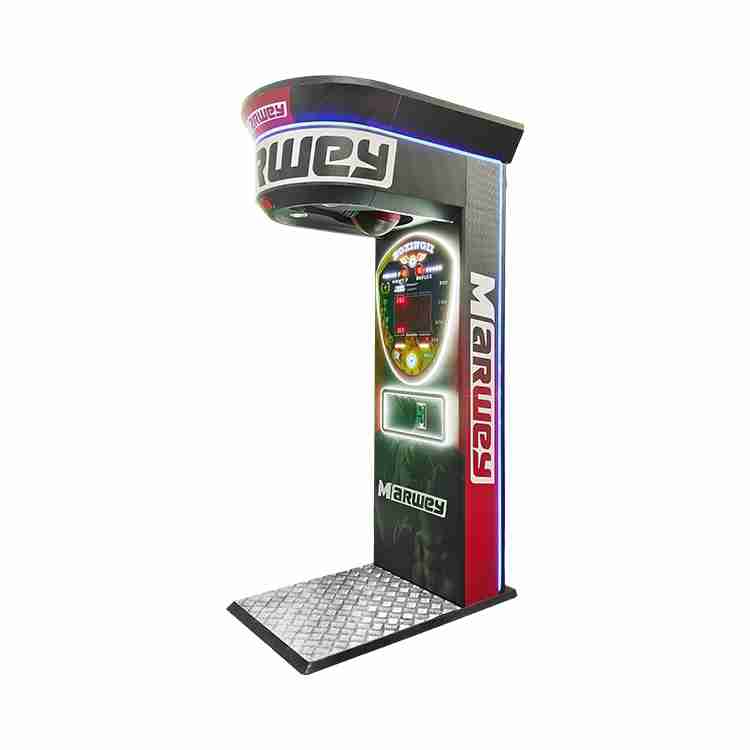Decoding the Thrills: A Comprehensive Guide to Gameplay Mechanics and Scoring Systems of Interactive Punch Power Arcade Machines
Welcome to an in-depth exploration tailored for arcade enthusiasts, players craving thrilling challenges, and operators seeking to optimize their entertainment ventures. Today, we dive into the core workings of interactive punch power arcade machine s — devices known for delivering adrenaline-fueled fun through measuring punch strength and speed.
Understanding the subtle nuances of gameplay mechanics and scoring systems is vital. Whether your goal is to maximize player engagement, refine the competitive atmosphere, or fine-tune operational efficiency, grasping these concepts unlocks new opportunities. Beyond mere amusement, such machines have cemented their role as commercial highlights that combine physical activity with digital feedback, thus fostering repeat visits and social dynamics.
1. In-Depth Understanding of Gameplay Mechanics
1.1 What Defines Gameplay Mechanics and Their Impact on Player Experience?
At its foundation, gameplay mechanics describe the rules and physical interactions that frame the player’s experience. For punch power arcade machines, this includes how players throw punches, how sensors detect force and speed, and how immediate feedback reinforces performance.
Key factors directly influencing gameplay include:
- Punch Force and Speed: The momentum and velocity of each strike dictate score potentials.
- Accuracy and Timing: Precision in hitting the target zone and timely execution enhance scoring.
- Rhythm and Consistency: Sustained performance through combo punches often triggers bonus points or multipliers.
- Posture and Positioning: Correct body mechanics can improve punch effectiveness and sensor readings.
This blend of physical performance and interactive technology crafts an immersive experience that balances challenge with reward, engaging players on multiple sensory levels.
1.2 Dissecting the Scoring Mechanism
The scoring system in a punch power arcade machine integrates various interactive hardware components with software algorithms. Typically, the process involves:
- Interactive Components: These include high-precision force sensors embedded in the punching pad, accelerometers evaluating speed, and microcontrollers processing data in real time. Feedback modules then translate this input into visual or audio scores displayed to the user.
- Scoring Rules: Scores are usually computed based on force magnitude combined with the punch speed. Some models award combo points for consecutive strong punches within a limited time frame. Advanced machines may also feature difficulty-based multipliers or special “power boost” modes triggered by achieving specific thresholds.
- Game Modes: Modes might range from timed challenges to endurance tests or competitive head-to-head matches. Each mode typically tweaks scoring algorithms to encourage strategic play.
- Calibration and Maintenance: Regular tuning keeps sensor accuracy steady, ensuring fairness and consistency in scoring. Neglect may lead to skewed outputs, reducing player trust.
1.3 Payment and Reward Systems Explained
Most units operate as coin or card-operated machines, featuring multiple payment options including:
- Coins and bills.
- Card payment readers (credit/debit, RFID).
- Mobile payment via QR codes or NFC (e.g., WeChat, Apple Pay).
Once payment is made, the system activates the selected game mode. Players complete their session, during which their score is visualized on screens or LED displays. High scorers may unlock on-screen badges, tickets redeemable for prizes, or leaderboard rankings, thus stimulating repeat engagement and competitive spirit.
2. Analysis of the Scoring System
2.1 Key Factors Influencing Score Calculations
The scoring algorithm primarily evaluates:
- Strength: Higher impact force directly correlates to a higher base score.
- Speed: Faster punches can multiply the score due to combined kinetic efficiency.
- Accuracy and Timing: Hitting target zones optimally and maintaining consistent rhythm often benefits from scoring bonuses.
- Combo Sequences: Punch chains without misses are rewarded with escalating multipliers.
- Penalties: Some systems may deduct points for weak, off-center, or paused punches to encourage skillful play.
Different play modes can alter how these factors weigh into the final score – for example, a “speed” mode emphasizes rapid hits, while an “endurance” mode rewards sustained power over time.
2.2 Common Score Tier Classifications
To facilitate player progression and competitive appeal, most scoring systems classify performance into graded tiers:
| Score Range | Player Level | Typical Description |
|---|---|---|
| 0 – 2500 | Beginner | Learning phase; focus on form and timing |
| 2501 – 5000 | Intermediate | Consistent performance; developing technique |
| 5001 – 8000 | Advanced | Strong punches with good combos and timing |
| 8001 and above | Expert | Top-tier strength, speed, and precision |
Specific machines may slightly vary these tiers, but the framework serves as a motivational tool for players to continuously improve. In multiplayer modes, ranking within these divisions incentivizes friendly competition.
3. Average Score Metrics and Their Practical Use
Average score refers to the mean value of scores achieved over multiple attempts or among a player group. This metric holds significance for:
- Operators: Tracking average scores over time helps assess machine popularity, calibrate difficulty, and tailor challenges that maintain player interest.
- Players: Comparing personal score averages against global or local benchmarks provides realistic goals and progress tracking.
For example, an operator might analyze monthly averages to spot peaks during promotions or dips needing intervention. Meanwhile, players can use average scores to evaluate training progress or readiness for competitive matches.
In practice, effective use of average scores establishes a feedback loop where measurable goals encourage persistent engagement and skill refinement.
4. Proven Strategies to Boost Your Punch Power Score
Having understood the mechanics and scoring, practical improvement tactics focus on maximizing physical and technical execution.
4.1 Cultivating Coordination and Power
- Consistent Warm-ups: Proper muscle activation avoids injury and primes explosive force.
- Stance and Body Mechanics: Balanced foot positioning and torso rotation generate more substantial punch momentum.
- Target Accuracy Drills: Practicing aimed strikes enhances sensor recognition and scoring.
- Speed Training: Interval punching sessions increase reaction times and combo potential.
4.2 Training Approaches Inspired by Real Experience
From my extensive experience managing interactive arcade venues, implementing routine guided practice yields measurable results. For instance, one arcade location introduced weekly “Punch Clinics” led by seasoned trainers. Over six months, participating players—initially averaging around 3200 points—improved their scores by an average of 1500 points, raising daily foot traffic by 20% owing to heightened enthusiasm and word-of-mouth.
Furthermore, calibration of sensors to accommodate diverse player styles ensured fair scoring, encouraging attendance across age groups and skill levels. This illustrates how combining player education with technical precision can significantly enhance performance outcomes.
4.3 Optimizing Machine Interaction
Simple behavioral adjustments can also impact scoring positively:
- Deliver punches squarely in the target zone to maximize sensor activation.
- Maintain a brisk pace to maintain combo streaks.
- Observe scoring feedback closely to identify which punches yield best results.
- Experiment with game modes to find one that best fits your rhythm and style.
Conclusion
Mastering the gameplay mechanics and scoring systems of punch power arcade machines offers tangible benefits for both players eager to enhance their experience and operators striving for sustained operational success. A sound understanding of how force, speed, accuracy, and interactive technology interplay forms the backbone of engaging entertainment.
Emb racing strategies to improve punch technique, leveraging data on average scores, and optimizing machine calibration not only heightens user satisfaction but also fosters vibrant arcade communities and profitable business models.
Whether you’re stepping into the arcade ring for the first time or managing a bustling entertainment venue, recognizing these core principles equips you with the tools to ignite non-stop fun and jaw-dropping performances.



















MARWEY
MARWEY
MARWEY
MARWEY
MARWEY
MARWEY